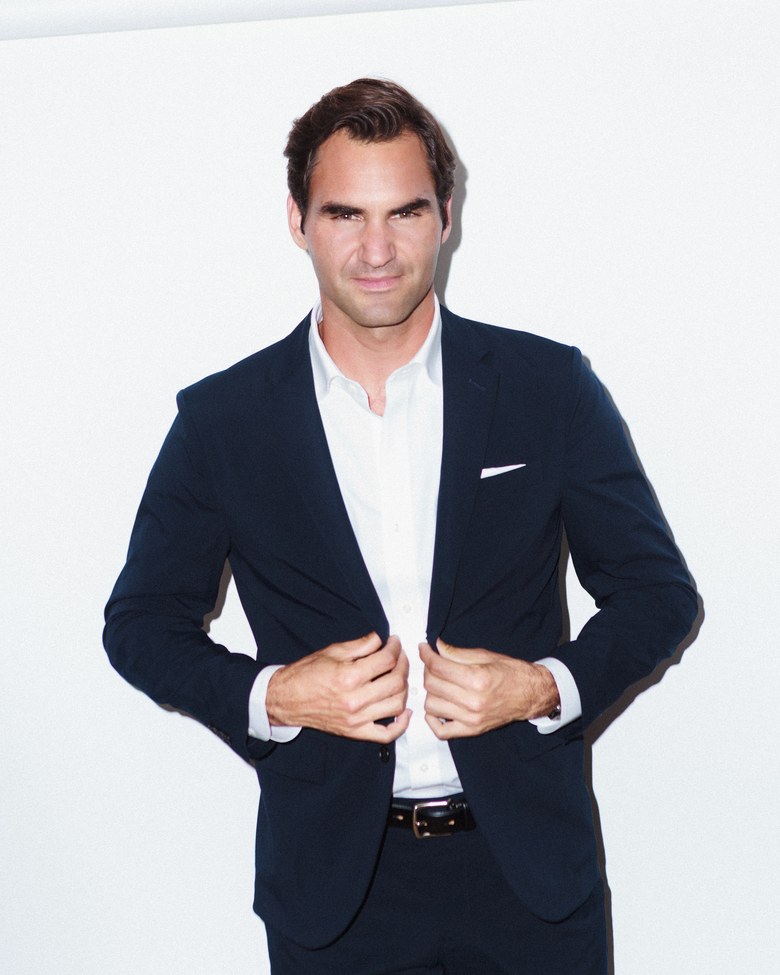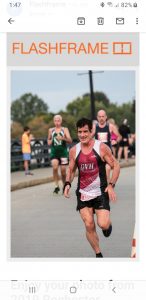
When Roger Federer steps onto the court at the U.S. Open, he’ll do it in a crimson-red Uniqlo polo and shorts. It might not sound revolutionary, but Federer’s partnership with the international retailer is the first of its kind in many ways. First off, the deal is cemented for 10 years; Federer will be 47 years old by the time it concludes, an age when he may no longer be playing tennis professionally. Then there’s the fact that, if you haven’t noticed, Uniqlo isn’t exactly an activewear company.
All of this is by design.
From a penthouse hotel suite in midtown, Federer and Uniqlo’s global president of creative John Jay explain. You see, Uniqlo prides itself on its “LifeWear” and in many ways, tennis provides the perfect fusion of life and sport. “I think it’s important to remember the core idea of what tennis [clothing] is; it actually works very well on- and off-court,” says Federer. “I think tennis in the past was always very wearable off-court, not only the shoes, but the polo we used to play in.” In the future the collaboration might include everyday clothes, or more activewear, or—wild idea—maybe even puffer jackets. Uniqlo has vast expertise and Federer knows much about fashion, attending runway shows around the world and sporting Ferragamo, Dior, and Gucci more in his daily life. He did look exceptionally dapper in a Uniqlo suit at our meeting. It’s something he says you could maybe even play in because of the stretch. “Why not? We should try it out!”
Their inaugural design is intentionally simple, with astute, modern details. A button collar. Contrast piping. Light breathable fabric. It will be available for preorder from today, delivering mid-October. You can get the red edition, from the U.S. Open, or opt for the tennis whites Federer wore at Wimbledon.
“I signed the deal on Thursday before Wimbledon and I walked out [on the court] on Monday, you know?” he said, explaining that the accelerated timeline made simplicity a big focus. “The good thing is it was Wimbledon, so it was all whites. We knew there is only so much you can do, and we did some testing beforehand making sure the fit, it’s good, it’s tailored, everything works; there is no drama there. I think we did a really nice job coming out with an outfit people enjoyed, so that was nice.”
But simple isn’t boring. “I like modern, especially to start off the collaboration because there are so many more things to come in the years, that I think this should send the message out that this is what we’re going to be doing, modern cool things,” Federer begins.
Plus tennis outfits have gotten a little crazy recently, haven’t they? “Very!” he exclaims, laughing. “I feel sometimes tennis has lost its way just to be loud, just to be recognizable, you know? To stand out from 10 outfits you want to be the one that’s the loudest. So we had the times we went neon, we had times where we had incredible crazy designs.” He pauses to laugh about some of the more graphic looks of the past. “I don’t mind it, but then you look back and you’re like, Really? Did we have to do that?”
Now Federer’s on court uniform is closer to his daily one. “I live out of a suitcase, so a lot of outfits have to match with other things. I can’t do all the crazy designs from Fall and then three months later I’m totally in a different place where it’s warm or cold and it doesn’t match anymore,” he says. “So usually you go with a lot of very classic, very clean looks that can mix around with materials as well. I think that’s where my looks come from.”
Okay, so this is all very chic and streamlined and accessibly elegant, but does it work?
Indeed, it does. Uniqlo has partnered with athletes before. Take Novak Djokovic, who won “basically everything” by Federer’s count while dressed by Uniqlo.
Jay emphasizes that there’s more than just sports at play here. “We’re not a sports company, we’re a company devoted to life, with LifeWear,” he says. “We didn’t start out, Hey, let’s do some athletes and do some marketing and so forth.” The first athlete Uniqlo ever signed was Shingo Kaneda, a wheelchair tennis champion. “What attracted us to him were values and principles. And without embarrassing this man sitting over here,” Jay continues, gesturing to Federer, “that was at the forefront. All the trophies—of course!—but the values and the principles. That’s why we’re locked in to a long-term commitment here because the potential is ahead of us.”
In the end Federer wants to win, but more so, he wants to “bring a lot of joy to a lot of people” on courts, off courts, with fashion, with philanthropy, with sports. Starting by winning the Open.









